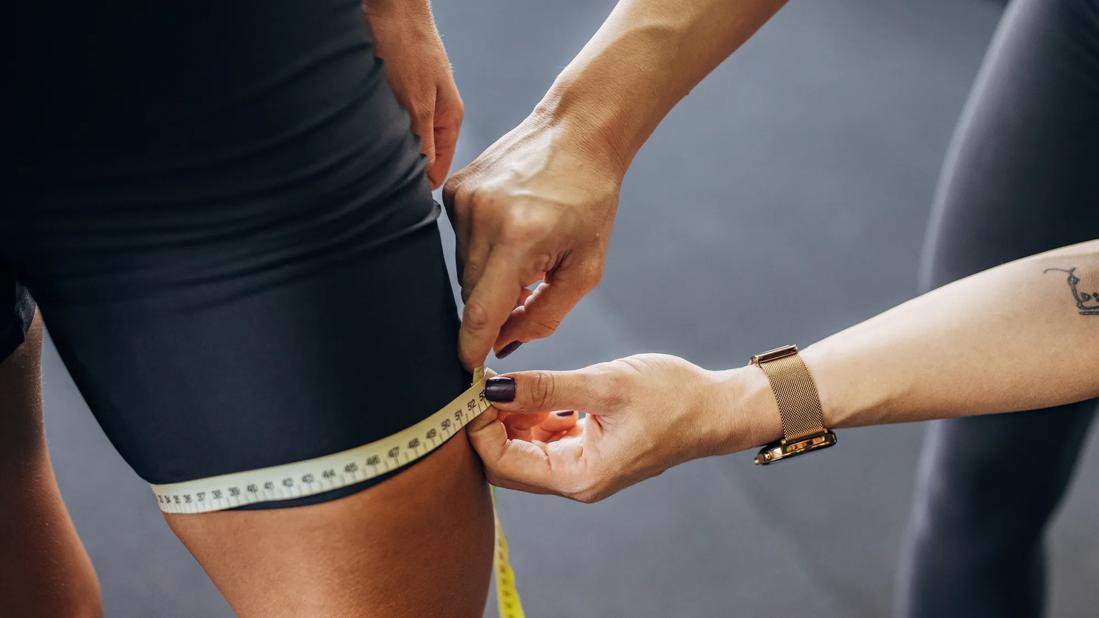Increase the size of your muscles by bulking up on protein and focusing on slow, intense movements with progressive overloading

Building bigger muscles takes time and dedication. And factors like your family history, genes and overall health can affect your muscle growth. So, if you’re just getting started, it can feel daunting trying to reach a bodybuilder physique.
Advertisement
Cleveland Clinic is a non-profit academic medical center. Advertising on our site helps support our mission. We do not endorse non-Cleveland Clinic products or services. Policy
But sports medicine physician Dominic King, DO, says it’s possible to reach hypertrophy if you’re committed to trying various forms of training workouts and nutrition.
Muscle hypertrophy is defined as an increase in muscle mass and a thickening of muscle fibers. You can build larger muscles through a combination of:
As you slowly increase the weight, intensity, resistance or duration of your training over time, your muscles learn how to grow, get stronger and deal with more stress. Essentially, muscular hypertrophy is all about building larger muscles.
In order to increase muscle growth, your muscles need more energy and fuel. Staying hydrated helps with muscle recovery, while protein helps your muscles rebuild and expand. Both are important for muscle hypertrophy.
“You want to get about 1.6 to 2.2 grams of protein per kilogram of body weight per day,” says Dr. King. “If you’re trying to maximize muscle growth and repair, you typically want to spread that out over three to five meals or snacks throughout the day.”
So, if you’re trying to achieve muscular hypertrophy and weigh 200 pounds, you should eat a minimum of 145 grams of protein every day to build more muscle. But that doesn’t mean you should bulk up on protein powders and supplements. Instead, aim for lean steaks, chicken and other whole foods rich in protein.
Advertisement
Hypertrophy training makes your muscles look and feel larger. That alone can be seen as a great benefit. But you also get:
“Some people achieve hypertrophy for aesthetics,” notes Dr. King. “But a vast majority of people want bigger muscles because they want to feel stronger so they can do everyday things. They want to be able to pick up their children, get up off the floor or get out of bed without difficulty.”
Beginners interested in muscle hypertrophy can start with these exercises:
But before diving into any of these, you’ll want to identify your one-rep max — that’s the most weight you can safely lift during a single, complete repetition without losing proper form.
“To reach hypertrophy, you want to lift between 60% and 80% of your one-rep max,” Dr. King explains. “It’s best to work with a physical therapist or athletic trainer, who can help you figure out your one-rep max for a more direct, individual approach to hypertrophy.”
Your hypertrophy workout should combine:
“When you’re trying to hypertrophy muscles, you want to emphasize controlled contractions,” says Dr. King. “You should move with a slow, even tempo when lifting and putting down weights.”

Hypertrophy is specifically focused on the physical size of your muscles. Strength training doesn’t always lead to significant muscle growth, but it can help you get stronger and maintain the muscle you already have. You just won’t look like the Hulk by the end of it.
Hypertrophy involves:
Strength training involves:
“Strength training helps you build enough muscle to stabilize your joints and stay fit for everyday activities,” says Dr. King. “Your muscles will become more defined, but they won’t bulk up significantly unless you’re specifically training for hypertrophy.”
Advertisement
Learn more about our editorial process.
Advertisement

A consistent walking program is an effective way to drop pounds and lose body fat

You can improve your athletic performance over time by breaking up your workout regimen into focused cycles

Shoulder rolls, hamstring stretches and calf exercises can all improve flexibility and endurance

Lower-intensity workouts can deliver high-quality health and fitness results

Incremental changes in your exercise routine can improve your strength and endurance over time

Understanding heart rate zones can help you tailor your workout to reach your goals

Low-impact exercises help you recover faster between sets, during cool downs and on rest days

Eccentric is slow and steady, while concentric is fast and controlled

Start having sex about 72 hours before ovulation, then at least every other day during your fertile window

Attachment theory suggests that your earliest relationships shape connections throughout your life

It isn’t a recognized mental health disorder, but research shows that problematic social media use can negatively affect your mental health, self-esteem and sleep